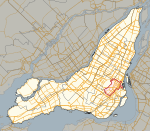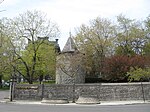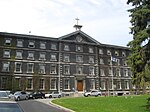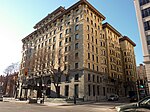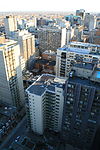Montreal Masonic Memorial Temple
Beaux-Arts architecture in CanadaBuildings and structures in MontrealDowntown MontrealHeritage immovables of QuebecLandmarks in Montreal ... and 4 more
Masonic buildings completed in 1930Masonic buildings in CanadaMasonic memorialsNational Historic Sites in Quebec

The Montreal Masonic Memorial Temple (French: Temple maçonnique de Montréal) is a historic masonic temple in Montreal, Quebec, Canada, on the corner of Sherbrooke Street and St. Marc Street, in the Golden Square Mile district. Dedicated and officially opened June February 12, 1930, it was designated a National Historic Site of Canada in 2001, as an example of one of Canada’s most elegant buildings in the Beaux-Arts style.
Excerpt from the Wikipedia article Montreal Masonic Memorial Temple (License: CC BY-SA 3.0, Authors, Images).Montreal Masonic Memorial Temple
Rue Saint-Marc, Montreal Ville-Marie
Geographical coordinates (GPS) Address Nearby Places Show on map
Geographical coordinates (GPS)
| Latitude | Longitude |
|---|---|
| N 45.4947 ° | E -73.583 ° |
Address
Masonic Memorial Temple
Rue Saint-Marc 2295
H3H 2E6 Montreal, Ville-Marie
Quebec, Canada
Open on Google Maps
